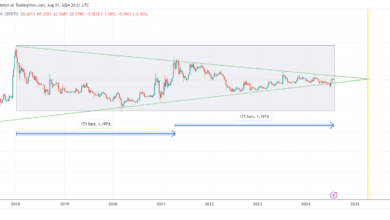Digital Euro: The Future of European Payments Explained

The digital euro is swiftly becoming a pivotal topic in discussions regarding the future of payment systems in Europe. Spearheaded by the European Central Bank (ECB), the digital euro aims to serve as a central bank digital currency (CBDC) that can compete effectively with major digital payment solutions, such as PayPal and Apple Pay. With anticipated features that promise simplicity, speed, and security, this innovative digital currency could redefine transactions for millions across the continent. However, as the ECB conducts in-depth investigations, concerns arise about whether the digital euro is necessary, sparking debate over potential CBDC benefits. By 2025, the ECB seeks to establish a comprehensive regulatory framework and conduct trials to pave the way for this digital transformation in finance.
The emerging concept of the digital euro, also referred to as a central bank-issued virtual currency, is inciting considerable interest across Europe. As the European Central Bank pushes forward with its initiative, this innovative form of money could provide alternatives to existing mobile payment platforms, reshaping the landscape of monetary transactions. The advantages of a digital currency, often summarized as a central bank digital currency or CBDC, include enhanced security and speed for users engaging in everyday transactions. Meanwhile, the European Payment Initiative is on the horizon, poised to offer a cutting-edge payment infrastructure in line with new digital solutions. As these financial instruments evolve, they promise to redefine how consumers and businesses conduct their financial affairs, with implications that could extend beyond simple convenience.
The Role of the European Central Bank in Digital Currency
The European Central Bank (ECB) plays a pivotal role in the exploration and implementation of the digital euro. As the central bank of the Eurozone, the ECB is tasked with maintaining monetary stability while exploring innovative financial solutions. The advent of digital payment solutions, particularly central bank digital currencies (CBDCs) like the digital euro, represents a significant shift in the European payment landscape. The ECB’s commitment to developing a regulatory framework aims to ensure that any future digital currency aligns with European financial norms and consumer protection standards.
While the ECB is at the forefront of developing the digital euro, it faces the challenge of convincing stakeholders of its necessity. The central bank seeks to create a payment system that offers safety, speed, and simplicity for consumers. However, as experts point out, the actual benefits of using a digital euro compared to existing digital payment solutions are still unclear. This leads to questions about the overall acceptance and integration of the digital euro within Europe’s multifaceted payment systems.
Frequently Asked Questions
What is the digital euro and how does it relate to the European Central Bank?
The digital euro is a proposed central bank digital currency (CBDC) that the European Central Bank (ECB) aims to develop to enhance digital payment solutions in Europe. The ECB is currently in the preparatory phase to evaluate its necessity and potential benefits for consumers and the economy.
How will the digital euro compete with existing payment providers like PayPal and Apple?
The digital euro is intended to provide a fast, simple, and secure alternative to payment systems offered by companies like PayPal, Apple, and Google. By offering a central bank-backed digital currency, the ECB aims to maintain control over the European payment system by reducing dependence on foreign payment providers.
What are the expected benefits of the digital euro as a CBDC?
The digital euro is expected to bring several CBDC benefits, including enhanced security, efficiency in transactions, and the facilitation of a free payment infrastructure within Europe. It aims to offer a viable alternative to existing digital payment solutions.
Is the digital euro necessary when there are alternative payment solutions available?
The necessity of the digital euro is a topic of debate. Experts like Jonas Gross suggest that while it may provide advantages, existing payment systems like Brazil’s ‘Pix’ and the upcoming European Payment Initiative could serve similar purposes without needing a new currency.
When can we expect the launch of the digital euro?
The European Central Bank plans to make a decision on launching the digital euro after the preparatory phase, which is set to conclude by the end of 2025. If approved, its introduction would not be expected until 2026.
What challenges is the ECB facing in developing the digital euro?
One of the biggest challenges for the ECB in developing the digital euro is establishing its actual utility for end consumers. Experts have pointed out the need for clear reasons why consumers would adopt the digital euro over existing payment solutions.
How does the digital euro fit into the broader context of payment systems in Europe?
The digital euro aims to integrate into the evolving landscape of payment systems in Europe, including initiatives like the European Payment Initiative, which seeks to provide efficient and competitive digital payment solutions tailored for the European market.
What role will the ECB play in operating the digital euro?
If launched, the European Central Bank will manage and operate the digital euro, establishing rules and regulations to ensure the efficiency and security of the payment system while safeguarding against dependence on international payment providers.
What has the ECB done so far regarding the digital euro project?
The ECB has concluded its initial investigations into the digital euro and is now preparing for a European CBDC by developing a regulatory framework, conducting tests, and identifying potential technology providers.
Can the digital euro enhance the current digital payment solutions available in Europe?
The digital euro, if successfully implemented, can enhance existing digital payment solutions by providing a government-backed alternative that prioritizes security and accessibility for European consumers.
| Key Points |
|---|
| The digital euro is being developed by the European Central Bank (ECB) to compete with popular payment providers like PayPal and Apple. |
| The ECB’s decision on introducing the digital euro will be made in two years, with the aim to develop a regulatory framework by the end of 2025. |
| There is currently no clear benefit for consumers using the digital euro compared to existing solutions. |
| Other payment infrastructures in Europe, such as the European Payment Initiative, may fulfill similar roles without requiring a new currency. |
| Jonas Gross from the Digital Euro Association emphasizes that the necessity of a digital euro is questionable and alternatives exist. |
| If introduced, the digital euro is not expected to be available until 2026. |
Summary
The digital euro is increasingly becoming a focal point in discussions about future payment systems in Europe. As the European Central Bank explores the potential for a central bank digital currency, it is clear that the digital euro aims to create a competitive landscape against entrenched payment platforms. However, the necessity and utility of this new currency remain in question. With a decision expected only after thorough preparatory investigations, the future of the digital euro is still uncertain, particularly in light of existing satisfactory payment solutions available to consumers. Thus, while the initiative may signal progress in digital finance, its ultimate impact will depend significantly on how it addresses the real needs of users and the competitive landscape.



